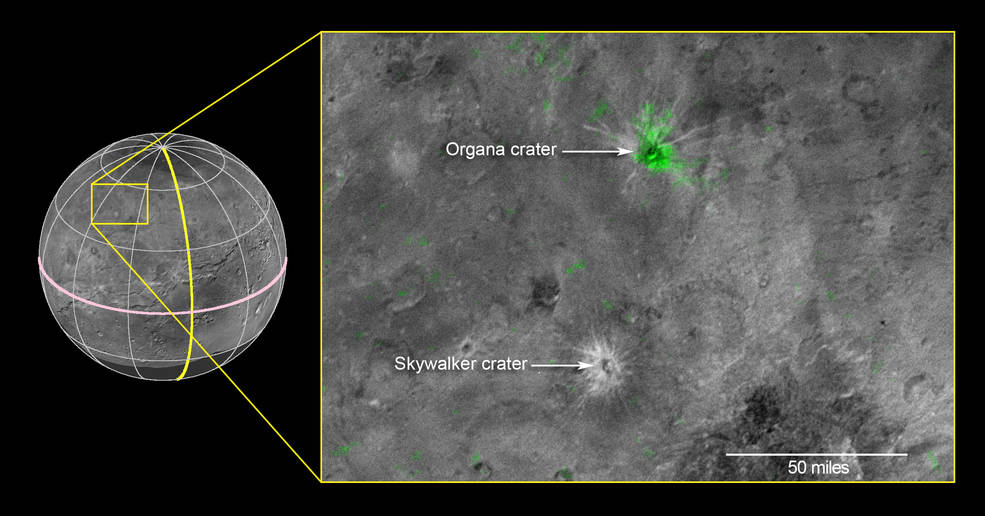A crater with a very high ammonia content was discovered on Charon.

Photo: NASA
Specialists, studying the pictures sent by the station New Horizons, made an interesting discovery : a very young crater was discovered on Charon, the satellite of Pluto. The crater, called Organa, attracted the attention of scientists while viewing composite infrared images of the satellite of Pluto.
The crater itself and the substance ejected from it, absorb infrared radiation with a wavelength of about 2.2 microns. This means that the substance of the crater is rich in ammonia, which is a unique phenomenon - on Charon more places have not yet been found. The infrared snapshot of the neighboring Skywalker crater does not show anything unusual, the characteristics are similar to those of Charon’s surface and other craters. Most of them are just water ice.
For the first time, scientists discovered ammonia on Charon in 2000, for which they used telescopes. But the concentration of ammonia in this crater is an unprecedented phenomenon.
')

Photo: NASA
“Why are there two neighboring craters of similar size, how different are their material composition?”, Asked Will Grundy, a member of the team of New Horizons. “We have a few goes about ammonia in the crater. This crater may be younger, or the meteorite hit the surface of Charon fell into the pocket with ammonia-rich ice. In addition, there is a possibility that the meteorite itself brought ammonia, ”commented Grandi.
Craters have equal sizes - about 5 kilometers, their characteristics are also approximately equal. The only difference is that the center of Organa is covered with darker material, and this material, rich in ammonium, extends beyond the borders of the dark area.
“This is a fantastic discovery,” says Bill McKinnon, another team member. “Concentrated ammonia is a powerful antifreeze on the ice worlds, and if ammonium is a common substance for Charon, this may explain the formation of Charon’s surface by cryovolcanism, by erupting cold, ammonia-water magma.”
Source: https://habr.com/ru/post/368841/
All Articles